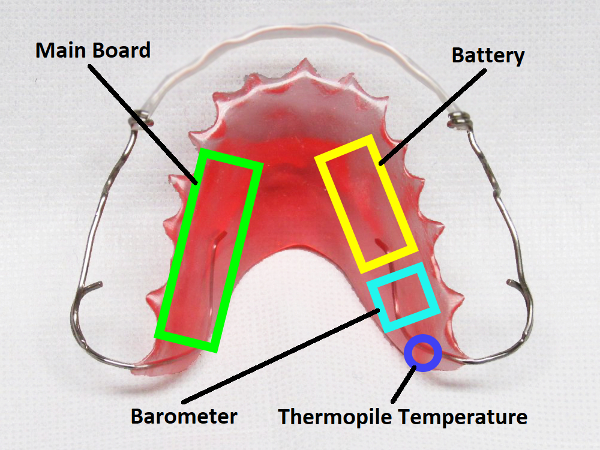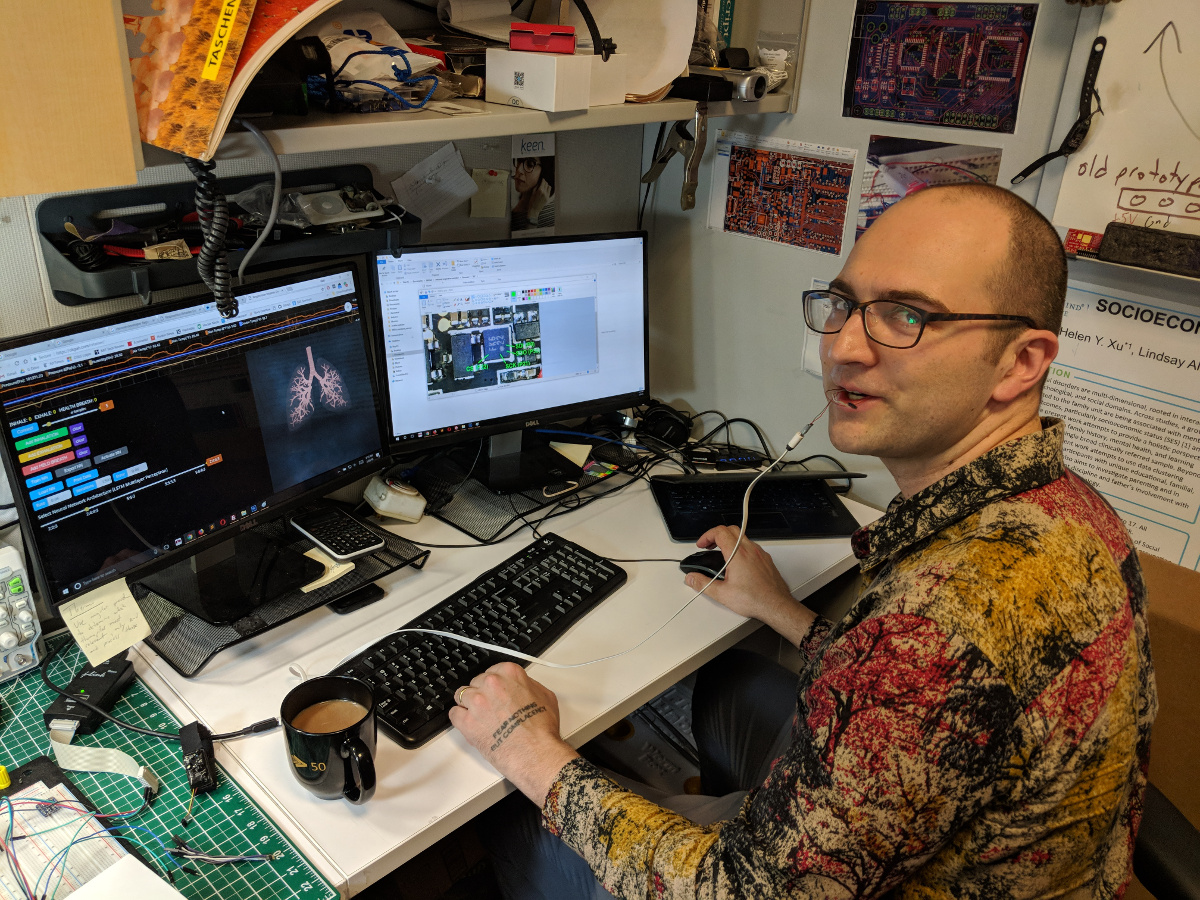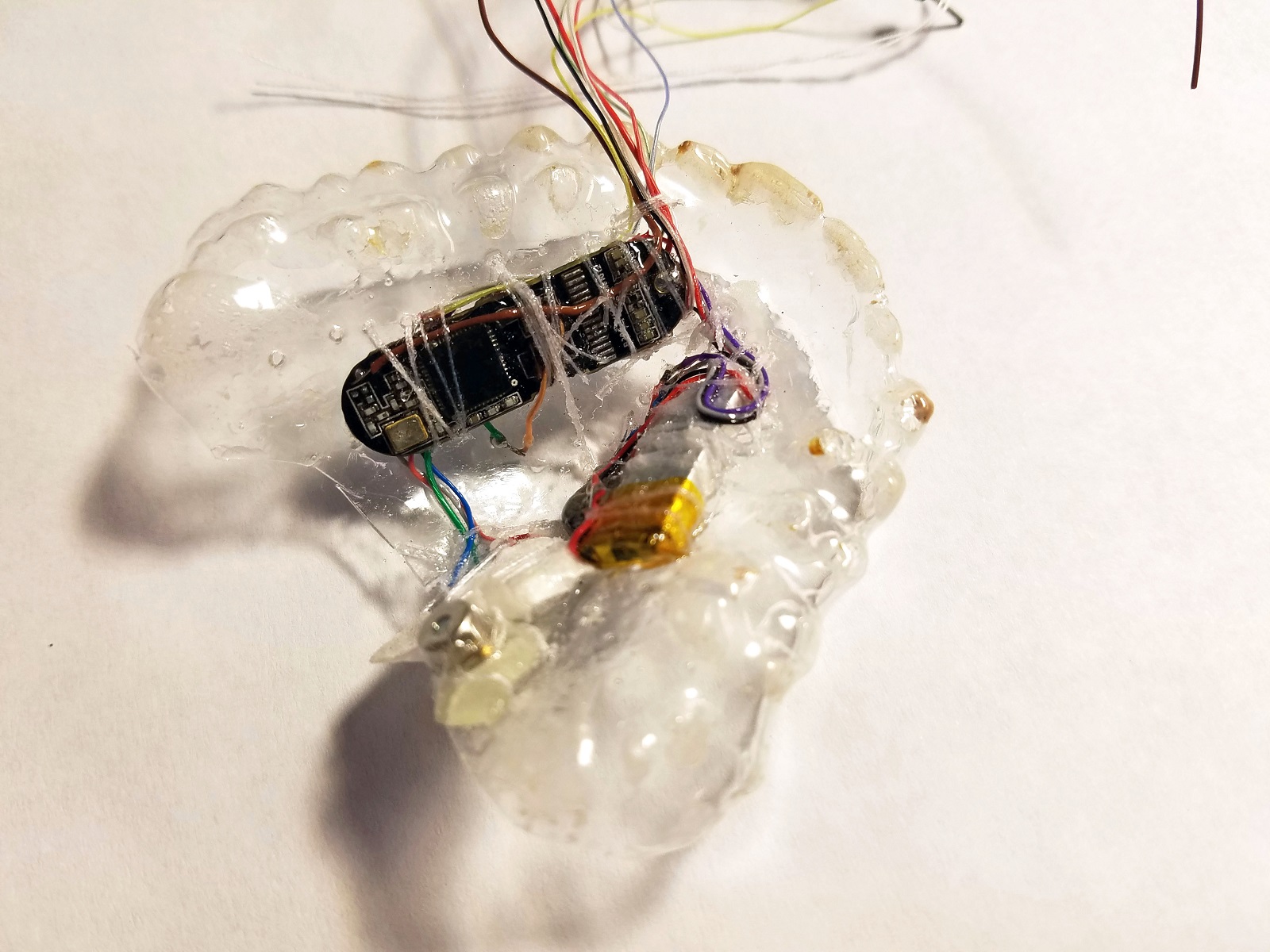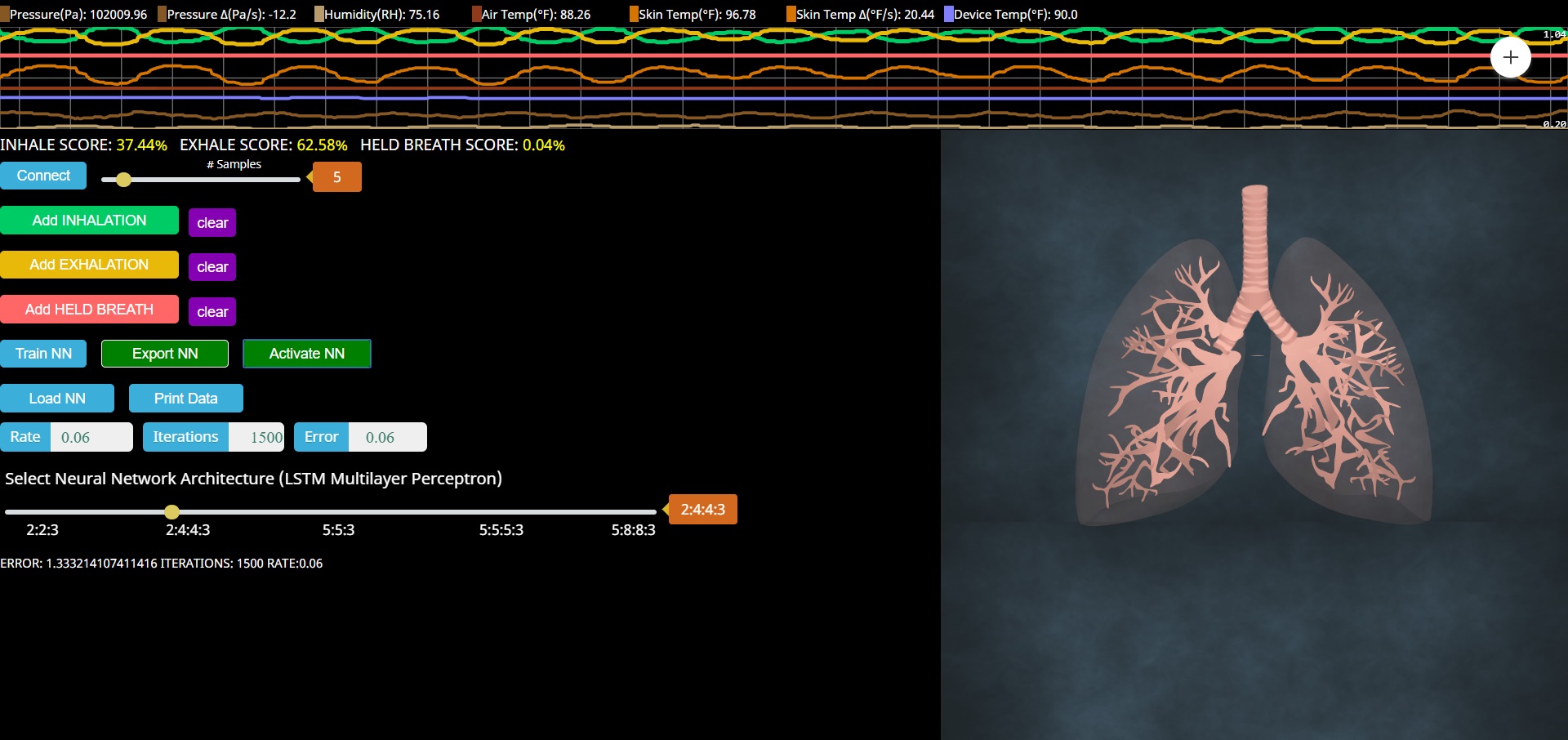Intraoral Respiration Monitor
for tracking breathing

This device measures the air pressure, humidity and skin temperature inside the user’s airway. In short, BME280 air pressure sensor + MLX90615 thermopile thermometer + hacked miniature nRF51822-based activity tracker mounted on an ultra-thin custom dental retainer.
-
Bluetooth-enabled web application that connects to the device HERE
-
Full project tutorial on Hackaday.io HERE
Motivation
The primary motivation for building this prototype was to start a discussion with the National Institute on Drug Abuse on potential opportunities to detect opiate overdose with a future, miniaturized version of such a device, or other form factor and placement. Depressed respiration is the best way to detect opiate overdose and the only approved indicator for the administration of Narcan (Naloxone). Full waveform respiration data is surprisingly difficult to obtain. Spirometers, chest-straps and pulse oximetry (including photoplethysmogram) are relatively inaccurate - particularly when respiration becomes depressed.
Results
The device contains a 16Mhz ARM Cortex M0 microprocessor combined with a Bluetooth radio for wireless communication (Nordic nRF51822). We stream data to a Web Bluetooth enabled web application. The streamed data is displayed graphically but can also be used to train and then apply data to a LSTM MLP neural network for the purpose of tracking respiration. The BME280 air pressure sensor is extremely sensitive and can acquire the respiration waveform regardless of whether users breath through nose or mouth. Even very shallow and slow breaths can be seen with the naked eye in the graphically displayed data. Below is a photograph of Curt White wearing the device in his mouth:



Current state
The intraoral respirometer is a prototype. We are seeking patent protection, but have no current plans to move this project forward, as it served its purpose in our NIDA discussions, and we are busy working on similar but more practical devices.
